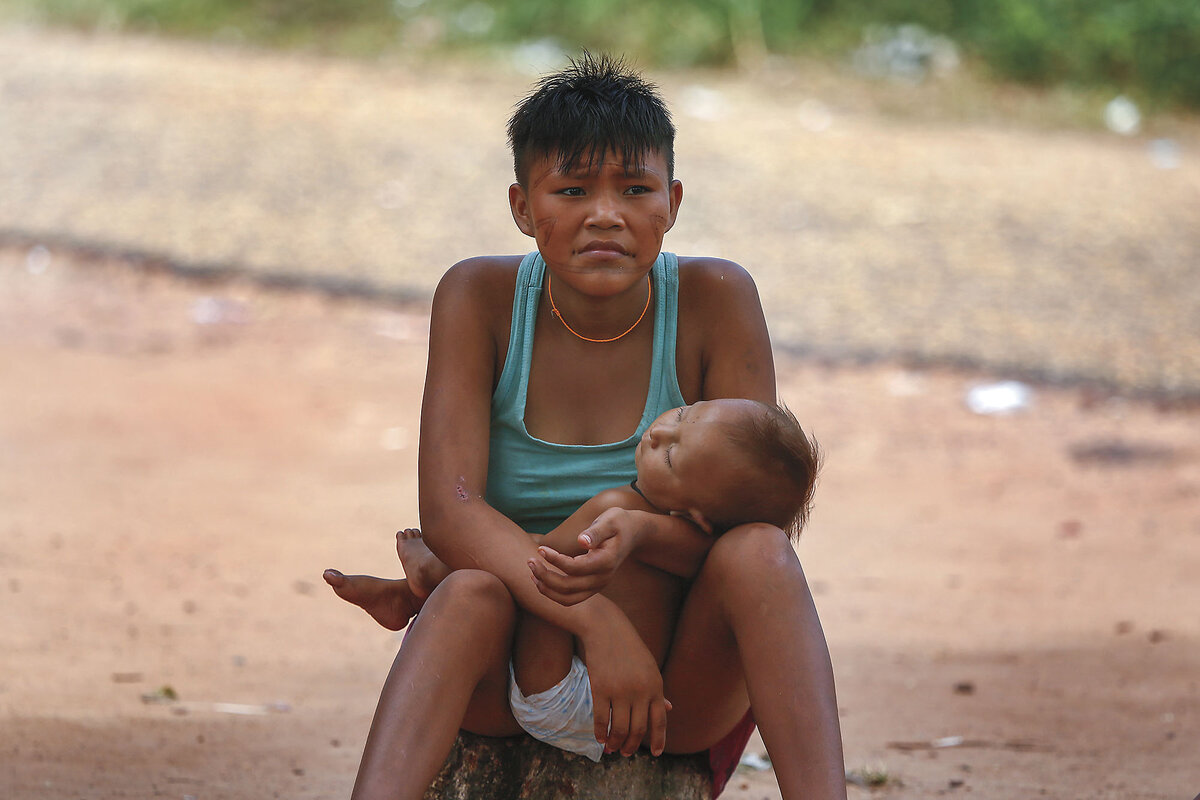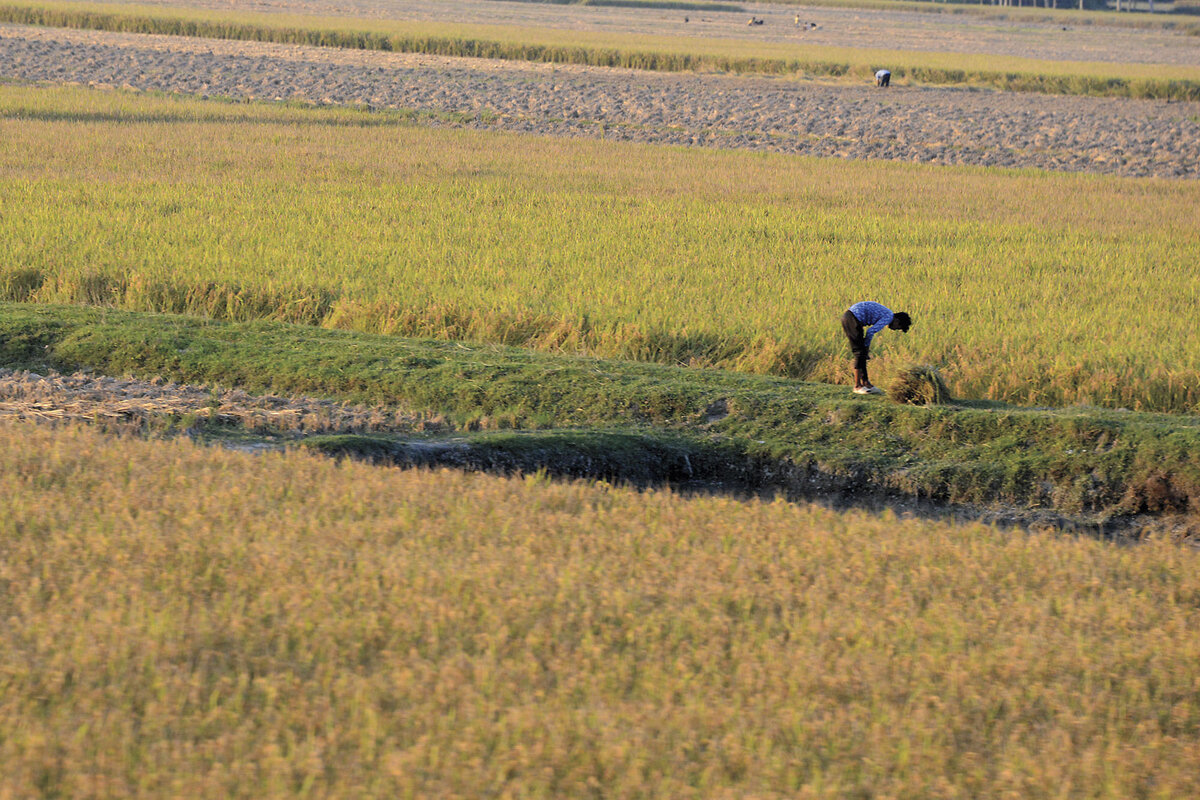When a ‘thumbs-up’ beats 5 stars, and where paralegals aid women’s land rights
Loading...
How rating people’s job performance could be more fair
Simplifying performance ratings can make them more equitable, a study found. Women and employees of color are often given lower marks than their white and male counterparts, which can impact their pay.
In a recent paper by researchers in the U.S. and Canada, more than 70,000 ratings were analyzed from an online platform where customers hire workers for home services. A binary rating of “thumbs-up” or “thumbs-down,” rather than one to five stars, equalized pay and ratings between white and nonwhite workers.
Why We Wrote This
Our progress roundup includes a look at equity in three ways: the fairness of grading job performance, the worthiness of women as landowners, and the focus on the needs of Brazil’s Indigenous people to improve their quality of life.
In work by other researchers, when professors were graded on a scale of 1 to 10, raters hesitated to give women the highest marks, which the study said was possibly because subjective traits such as “perfection” are more readily ascribed to men. Yet the gap disappeared when professors were rated on a scale of 1 to 6.
“The study presents a powerful ... change to reduce racial bias and increase equity in evaluations. This is an especially important discovery in an era in which diversity, equity and inclusion programmes are under threat,” wrote management professor Lauren Rivera of Northwestern University.
Source: Nature
In Brazil, hunger and infant mortality are falling for the Yanomami tribe
Two years ago, President Luiz Inácio Lula da Silva created a ministry for Indigenous peoples and sent troops and health care workers to the Yanomami region. In one reopened clinic in the territory, in northwestern Brazil, there are 36 nutritionists compared with just five before.
From 2019 to 2022, criminal mining gang activity increased, flattening forests and aggravating interethnic conflicts with imported firearms. At a recent summit, Yanomami leaders from some of the 390 villages reported that people are now swimming and fishing in previously polluted rivers.
Illegal mining has dwindled but not stopped, and challenges remain. Nilton Tubino, a government official, said the next step was to ensure a permanent government presence to stop another large-scale mining invasion and help Yanomami communities rebuild.
Source: The Guardian
Farmers pivot to rewetting dried-out wetlands
German farmers are rewetting their dried peatlands to curb carbon emissions. Marshes and bogs historically have been drained for agricultural use, which is responsible for an estimated 3% to 5% of greenhouse gas emissions a year. In Germany, it’s 7%. Today, Europe leads a movement to restore peatlands and support farmers in paludiculture – growing crops in wetlands.
While peatlands cover just 3% of Earth’s land surface, “They store more than 500 gigatons of carbon, which is twice as much carbon as all the world’s forest biomass combined,” said Franziska Tanneberger, a peatland scientist.
The challenge is scaling up restoration and creating markets for the plants that can be grown in these ecosystems. German government programs include grants in the state of Bavaria for experimenting farmers. A nonprofit initiative, ToMOORow, brings together corporations committed to paludiculture. One company made cardboard boxes with 10% peatland biomass. And in England, a startup is growing bulrush for winter jacket insulation.
Sources: Yale Environment 360, Nature
Tanzania reduced maternal mortality by 80% in seven years
In the focus period, every maternal death was discussed to determine new recommendations. One set of reviews of 708 deaths attributed two-thirds to “attitudes and practices” to be targeted for better training.
Between 2014 and 2023, the number of facilities providing high-quality emergency obstetric care increased almost fivefold to 523. At the same time, a network of taxi drivers provided affordable emergency transportation, helping to fill gaps where ambulances are not available. Experienced OB-GYNs traveled to isolated communities twice a year to mentor younger colleagues.
Maternal mortality fell to 104 deaths per 100,000 live births between 2016 and 2022. That’s significantly lower than the continentwide average of 531 deaths per 100,000. In 2002, sub-Saharan Africa accounted for 70% of the world’s pregnancy-related fatalities. Poverty is linked to maternal mortality, and according to the World Bank, Tanzania rose from a low-income country to low-middle-income in 2020.
Sources: Africa Centres for Disease Control and Prevention, World Health Organization, Fix The News
Legal clinics are helping female farmers to access their land rights in Gujarat, India
The Hindu Succession Act has recognized for 20 years that daughters and sons have equal inheritance rights. However, only about 14% of rural women in India own land, while five times that many work in agriculture.
In Gujarat state, the Working Group of Women for Land Ownership has trained over 200 paralegals to help with documents and counseling, and as many as 20,000 women have secured land titles.
“Women’s access to land and property titles is the single most important contributor to their empowerment,” said developmental economist Bina Agarwal, whose work led to the Succession Act amendment in 2005.
When mothers own assets, their spending is more likely to benefit the household than when men have all the economic power, and their children are healthier and better educated. Advocates say that India’s 1937 Muslim Personal Law also needs amending to include Muslim women’s agricultural land rights.
Source: Reasons to be Cheerful








